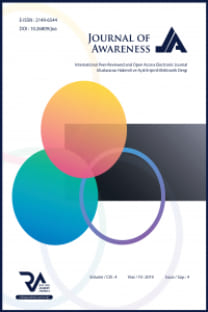MAHALLE ÖĞESİ VE TURGUT CANSEVER PROJELERİ
Mahalle bir yerleşim ölçeği olarak kentsel alanın idari olarak bölünmüş bir parçasını tanımlamaktadır. Kentin fiziksel yapısı ve gelişimi bakımından mahalle birimi önemli bir kentsel ölçektir. (Felekoğlu,2000: 5) Toplumda düzen, iyileşme ve güzelleşme; sosyal ilişkilere ve etkileşimlere olanak veren mahallede başlamaktadır. Türkiye’de mahalle kavramının temeli Cansever’in tanımıyla“…mahremiyetine sahip, bahçe-doğa, mahalle-toplum ilişkilerinin en yoğun şekilde yaşandığı...” Osmanlı-Türk mahallesiyken “günümüze gelindiğinde mahalle kendisine modern kent mekânları arasında yer bulmaya çalışan sınırlı bir alan olarak karşımıza çıkmakta ve kültürel bir yapıdan daha çok idari bir yapıya işaret etmektedir”.(Baday,2011: 30)Bu süreç dikkate alındığında mevcut mahalle oluşumunda bir değişimin var olduğu görülmektedir. Bu sebeple Cansever’in “Güzel bir dünya inşa etmek, dünyayı güzelleştirmek, insanların gelecek nesillere karşı asli vecibeleri ve sorumluluklarıdır”Şiarı ekseninde kent ve mahalle ölçeğinde tasarladığı mimari projeler sosyolojik ve mimari bağlamda irdelenmiştir. Elde edilen verilerin yeni oluşturulacak mahallelerin kavramsal altyapı hazırlama ve tasarı süreçlerine katkı sağlaması hedeflenmektedir.
THE NEIGHBORHOOD CONSTITUENT AND TURGUT CANSEVER PROJECTS
The neighborhood is described an administrative fragment of the urban area as a settlement scale. The neighborhood unit is an important urban scale in terms of the physical structure and development of the city. Order, improvement and beautification in society (Felekoğlu, 2000) start with social relations and interactions. With the definition of Cansever, which is based on the concept of neighborhood in Turkey," while it is the Ottoman-Turkish neighborhood where the relations between the garden and nature, the neighborhood and society are lived the most intensely and having privacy, when it comes to the day, the neighborhood is a place that there is a limited space trying to find itself among the modern urban spaces, and it points out a cultural structure rather than an administrative structure (Baday, 2011). Considering this process, it seems that there is a change in the existing neighborhood formation. For this reason, With the axes of Cansever's slogan that is stated as "building a beautiful world, beautifying the world, people have the principal obligations and responsibilities for future generations." The architectural projects designed in the city and neighborhood’s scale have been examined in the sociological and architectural context. The new data to be generated is targeted to contribute to the conceptual infrastructure preparation and drafting processes of new neighborhood to be formed
